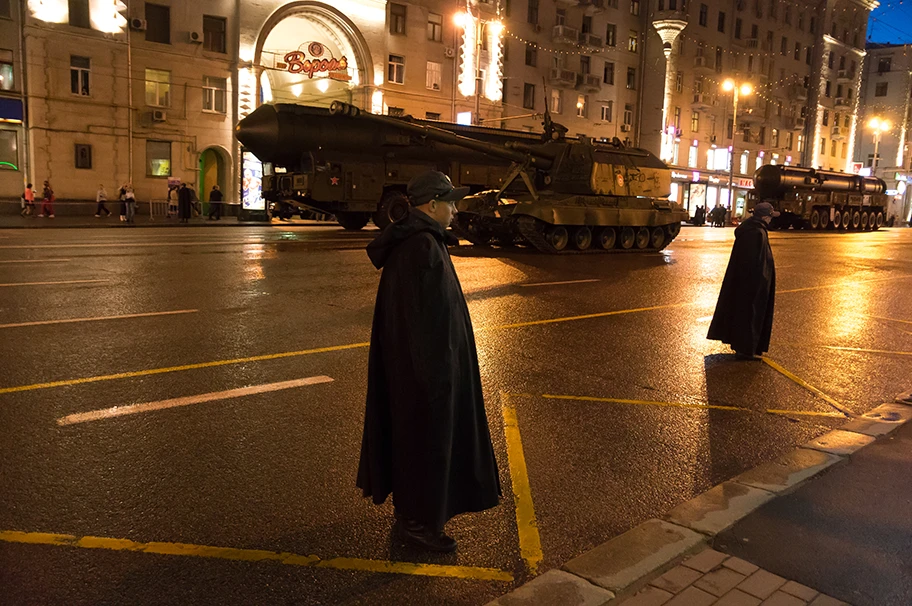By partially mobilizing – for the time being – 300,000 reservists and annexing the four eastern and southern Ukrainian regions, the Kremlin opted for further escalation. This was exacerbated by intense Russian missile attacks on energy infrastructure and civilian targets across Ukraine, including the capital Kiev, following an explosion on the strategically important bridge linking Russia to the peninsula it annexed in 2014.
Adjustment of The Goals of the War
The current annexation of the four territories was motivated by several factors. On the one hand, it represents an adjustment of the goals of the war, which on the one hand are being massively scaled back in order to make them unavailable for any negotiations. These are Putin's minimum goals, which are no longer to be the subject of negotiations – at the same time, there is less talk of regime change in Ukraine or anything like that.The Kremlin must adapt its imperial ambitions, which only a few months ago saw Ukraine as part of Russia, to military realities in order to simultaneously satisfy the Russian right, the imperialist and nationalist hardliners who are constantly pushing for a further intensification of the war. In the course of the war so far, Putin has been pressured not by liberal forces, but by right-wing forces, which have been calling for total mobilization and unrestricted warfare for months. With the annexation of large parts of eastern Ukraine –accompanied by offers of negotiations to Kiev – the Kremlin is not only signaling to the West what it intends to take with it as the minimum spoils of its imperial adventure, it is also paving the way for nuclear war, for the final stage of escalation. Since the beginning of October, the Kremlin has considered the annexed Ukrainian regions as part of Russia, and Russian military doctrine provides for the use of nuclear weapons for national defense, even against conventional forces. The danger of nuclear war is now greater than at any time since the end of the Cold War, precisely because the Kremlin, in its imperial megalomania, has overestimated the military capabilities of the Russian army and is still barely able to stabilize the front in eastern and southern Ukraine.
At the latest since the partial mobilization, which is also an admission of the weakness of the Russian armed forces, Vladimir Putin's political – and ultimately physical – survival is also at stake in the war. Authoritarian regimes encourage apathy, the indifference of the population, in order to secure their rule, which is why Putin has long resisted mobilization because it will inevitably politicize Russia. Without imperial gains, Putin cannot end the war and survive politically, because partial mobilization is already destabilizing the state-oligarchic, kleptocratic ruling structure in Russia.
This is currently evident at its borders, where tens of thousands are leaving the country, even before the expected heavy losses among the reservists. Putin thus needs a victory in his imperial war, even though he has no ability to secure it. In view of this power-political impasse, the Kremlin's flight to a nuclear attack, which is constantly threatened, seems quite possible. The use of weapons of mass destruction by the ailing Russian military machine would even become likely in the event of an advance by Ukrainian units into Crimea or into the eastern regions that had already seceded during the 2014 civil war.
Instrumentalization Of The Systemic Crisis
For Ukraine, Russia's partial mobilization and annexation means that everything is now riding on a military escalation. Kiev is pressing ahead with the so far successful offensives in the east and south of Ukraine with all its might in order to, despite all the losses, take advantage of the window of opportunity that remains for the Western-equipped and modernized army before the Russian partial mobilization materializes on the front. Putin's annexation is rendered meaningless by Russia's inability to hold these “new” territories militarily, which at the same time should help destabilize the “power vertical” around Putin. This is why Kiev responded to Putin's offers of negotiations with a decree that categorically rules out negotiations as long as Putin is president. This is meant to encourage revolts in the palace.Meanwhile, not only Kiev but also Washington seems to be banking on the very regime change in Moscow that Putin's invasion aimed to bring about in Ukraine. The stakes in this crisis-imperialist “Great Game” over Ukraine are getting higher and higher, the warring parties have more and more to lose, which in turn makes de-escalation more and more difficult. The blowing up of the North Sea pipeline, which had been a thorn in the side of the former Central Eastern European transit countries and the US in particular, illustrates the readiness for escalation that exists on all sides. Sometimes crisis tendencies, state erosion and state disintegration are deliberately promoted: the Ukrainian right sees the disintegration of Russia as a strategic goal.
There are similar considerations in Western think tanks, where it is currently being debated whether Putin is still needed as a “factor of order.” Russia, for its part, is trying, not entirely unsuccessfully, to bring Western Europe to its knees in the coming winter through its economic war. The capitalist systemic crisis is being instrumentalized to some extent by all the warring parties.
Pre-apocalyptic Conflict Constellation
The West's political stability is therefore also at stake in the face of increasing economic distortions. This does not only apply to Germany, where the New Right is already smelling the morning air and the Querfront of parts of the Left Party and the AfD is already marching together, for example in Brandenburg an der Havel, for Russian natural gas. Rising inflation, the renewed threat of a global financial crisis, the recession – these are the very concrete internal contradictions of the crisis that are also driving the West into confrontation.The intransigent, escalationist attitude of Washington and Berlin towards the imperialist Putin, which is a sharp contrast with their laissez faire towards the bloody imperial adventures of Western ally Erdoğan, is driven by the same crisis-imperialist logic as in Russia's crumbling “power vertical.” The internal crisis is to be bridged by external expansion: The dwindling dollar must be defended as the world's reserve currency at literally any cost, and access to the raw materials and energy sources that Moscow uses as an economic weapon must be restored – even if this requires regime change and state collapse.
For many of the main parties to the conflict, there is little turning back from the spiral of escalation. In early October, Moscow warned the West of a “direct confrontation” if the recently negotiated resumption of arms deliveries to Kiev went ahead. A distanced view of this crisis-imperialist war reveals a pre-apocalyptic constellation of conflicts. As capital breaks down from its internal and external contradictions, as climate and economic crises escalate, the crisis-ridden late capitalist state behemoths, driven by these contradictions, threaten to attack each other – until the self-destructive urge of capital is unleashed in a nuclear exchange.



